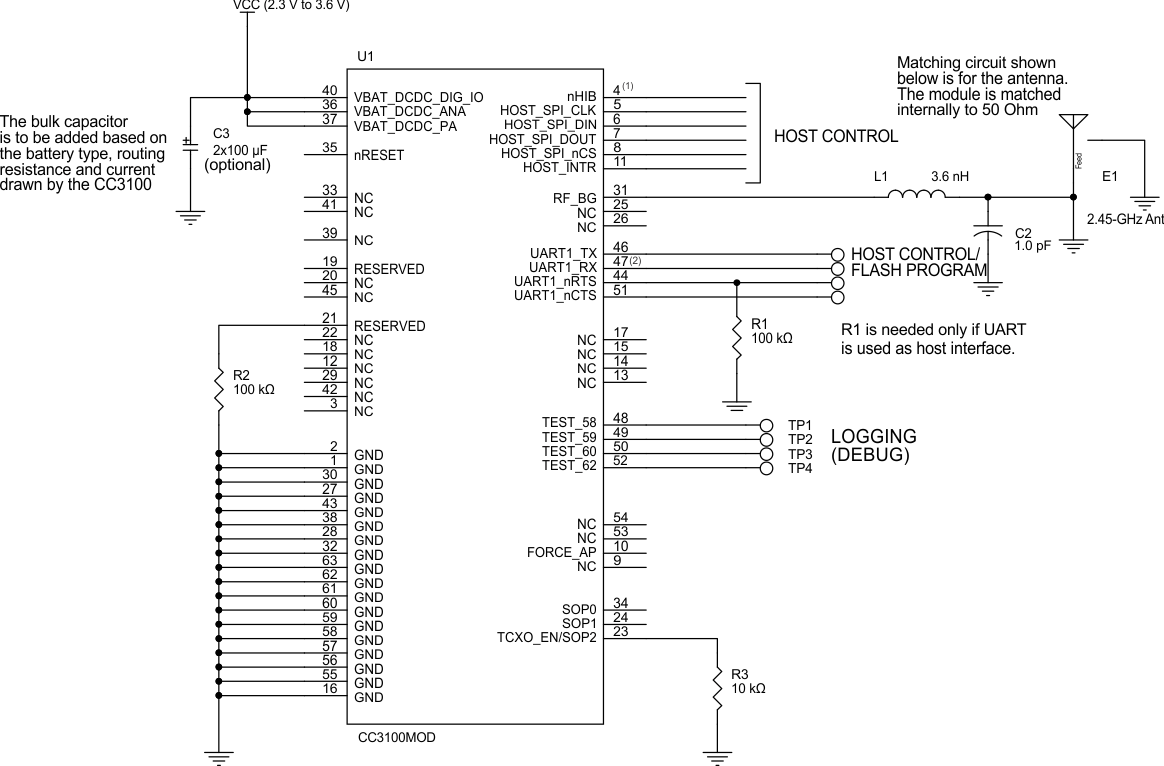ZHCSM59B November 2014 – September 2020 CC3100MOD
PRODUCTION DATA
- 1 特性
- 2 应用
- 3 说明
- 4 功能方框图
- 5 功能方框图
- 6 Revision History
- 7 Terminal Configuration and Functions
-
8 Specifications
- 8.1 Absolute Maximum Ratings
- 8.2 ESD Ratings
- 8.3 Power-On Hours (POH)
- 8.4 Recommended Operating Conditions
- 8.5 Power Consumption Summary
- 8.6 TX Power and IBAT versus TX Power Level Settings
- 8.7 Brownout and Blackout Conditions
- 8.8 Electrical Characteristics (3.3 V, 25°C)
- 8.9 WLAN RF Characteristics
- 8.10 Reset Requirement
- 8.11 Thermal Resistance Characteristics for MOB Package
- 8.12 Timing and Switching Characteristics
- 8.13 Host UART
- 9 Detailed Description
- 10Applications, Implementation, and Layout
- 11Environmental Requirements and Specifications
- 12Device and Documentation Support
- 13Mechanical, Packaging, and Orderable Information
10.1 Reference Schematics
#SWRS1619015 shows the reference schematic for the CC3100MOD module. The complete schematic can be downloaded from http://www.ti.com/lit/zip/swrc293.

A. If the GPIO from the MCU can float while the MCU enters low power, consider adding a pulldown resistor on the board to avoid floating.
B. TI recommends using a 100-kΩ pullup resistor to save a few tens of µA in hibernate state.
This is the reference schematic and not an actual board design. For the board files, refer to the CC3100MODBOOST in the CC3100MOD Tools Folder.
Figure 10-1 CC3100MOD Module Reference Schematic